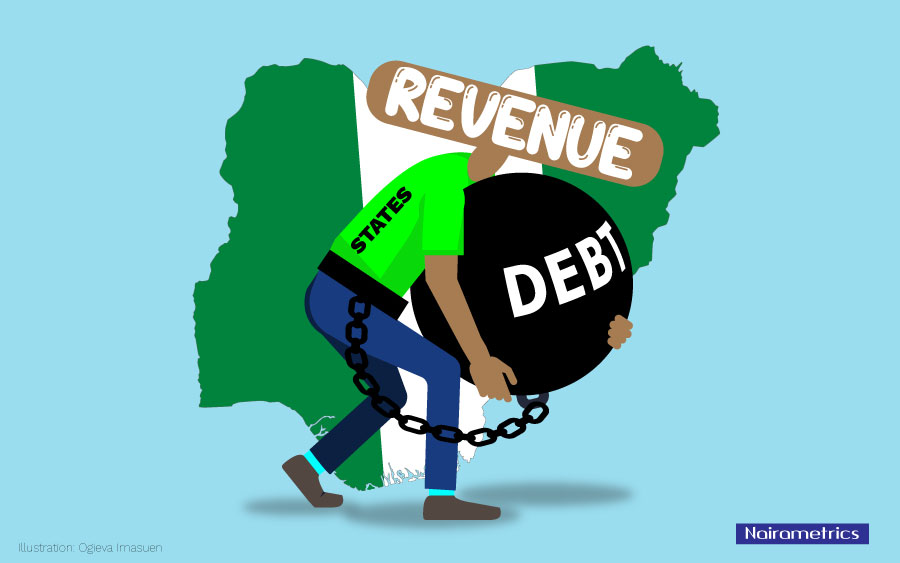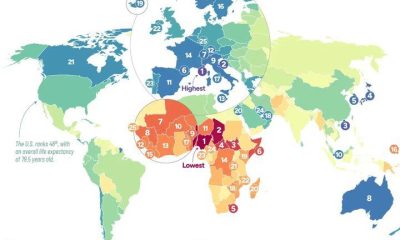Business
The debt shackles return
Published
8 years agoon
By
Olu Emmanuel
By Michael Heise
The only sustainable debt burden is one that can be managed even during cyclical downturns. Yet governments continue to repeat the same mistakes, treating debt as a boon for long-term growth, rather than what it is: a source of massive long-term risks.
Global growth is accelerating. But before we break out the champagne, we should acknowledge the long-term risks to sustained expansion posed by rising private and public debt.
Market analysts view the uptick in private lending in most emerging and some developed economies as a sign of higher demand and a precursor of faster growth. But, while this is true in the short run, the relentless rise of overall debt remains among the most serious problems burdening the global economy.
Despite years of deleveraging after the 2008 global financial crisis, debt remains very high – and yet we have now returned to an expansionary credit cycle. According to the Bank for International Settlements, total non-financial private and public debt amounts to almost 245% of global GDP, having risen from 210% before the financial crisis and around 190% at the end of 2001.
General government borrowing in the United States may reach 5% of GDP this year, pushing total public debt to about 108% of GDP. In the eurozone, public debt stands at about 85% of GDP; in Japan, the debt-to-GDP ratio registers close to an eye-popping 240%. Globally, private non-financial debt is growing faster than nominal GDP.
These trends are set to continue, as many major central banks – including the European Central Bank and the Bank of Japan – have not just welcomed the recovery in lending, but are even aiming to stimulate more credit-financed growth. Only the US Federal Reserve and the People’s Bank of China are taking steps to rein in bank lending.
The world has endured enough economic crises to know that high debts create serious risks. Nominal debt is fixed, but asset prices can collapse, generating huge balance-sheet losses and causing risk premia – and thus borrowing costs – to rise. A mere decade ago, when a credit-fueled financial boom turned to bust, the financial sector was pushed to the brink of collapse, and a years-long recession followed in much of the world.
The only sustainable debt burden is one that can be managed even during cyclical downturns. Yet governments continue to repeat the same mistakes, treating debt as a boon for long-term growth, rather than what it is: a heavy burden and a source of massive long-term risks.
It is time for policymakers and their economic advisers to recognize this, and abandon the assumption that more debt always leads to more growth. Though there are times when governments need to borrow to stimulate the economy, deficit spending cannot lift growth in the long term. And at times when growth rates and private-sector borrowing are rising – times like now – governments should be working to reduce their own deficits. This is relevant for the US and Japan, but also for European Union countries, which should take advantage of today’s recovery – the strongest in the decade – to bring their public finances in line with the Stability and Growth Pact.
Governments should seek to prevent the buildup of unsustainable debt by stimulating long-term, non-debt-financed growth, using a combination of regulation, trade agreements, investment incentives, and educational and labor-market reforms. In a low-inflation environment like the one prevailing today, central banks can cushion the impact of such reforms through expansionary monetary policies.
But central banks must calibrate their interventions carefully, to ensure that monetary expansion does not encourage the buildup of even more private-sector leverage. This means thinking twice before enforcing negative deposit rates, designed to pressure banks to lend more, or liquidity operations conditioned on bank lending.
A better approach would emphasize the use of forward guidance to influence interest-rate expectations and bond yields. Low yields can fuel asset-price increases and stimulate demand in a range of areas, not only through higher corporate leverage. That said, with asset prices already high and economies growing at a healthy pace, central banks should follow the Fed’s lead in gradually unwinding the stimulus programs they initiated after the 2008 crisis.
Moreover, regulators should do more to ensure that private debt is channeled toward productive uses offering decent longer-term returns. This is the lesson from previous debt crises, including the subprime mortgage bubble that triggered the meltdown a decade ago, with devastating consequences for growth and employment.
For example, regulatory authorities can employ macroprudential policies to impose limits on segments of financial markets that are overheating, thereby improving the allocation of capital and stabilizing investment returns. They should take particular care to prevent real-estate bubbles, because real estate constitutes a huge share of overall wealth and a key source of collateral in finance. But the strong rise of low quality leveraged loans should also be a concern.
None of this will be easy for governments, regulators, or central banks. Monetary tightening may slow growth temporarily; preventing the growth of bubbles is notoriously difficult; and the types of structural reforms needed to secure a shift away from debt-fueled growth are hardly ever popular. Today’s febrile political environment certainly will not simplify matters.
But the consequences of shying away from such choices could be devastating. The financial cycle will continue to gain momentum, eventually causing asset prices to overshoot fundamentals by a wide margin; leverage ratios will rise even further, and demand will outstrip capacity, spurring inflation.
At that point, an external shock or a decision by central banks to apply the monetary brakes – an inevitable response to mounting exuberance and rising inflation – will lead to a potentially ruinous crash. Financial markets, hopped up on low interest rates and ample liquidity, would take a major hit. Private leverage and public debt levels would suddenly look a lot less sustainable.
Times may be good, but good times are precisely when risks build up. Policymakers cannot say they have not been warned.
Michael Heise is Chief Economist of Allianz SE and the author of Emerging From the Euro Debt Crisis: Making the Single Currency Work.
You may like


Naira devaluation pushes Nigeria’s debt service cost to N7.8trn


Nigeria to manage public debt using state-of-the-art Commonwealth software


Nigeria spends $3.07bn to service external debts in 10 months


UBA takes over Stallion’s Lagos, Port Harcourt, Kano assets over N156bn debt


Akpabio highlights importance of boosting Nigeria’s revenue generation


Inflation pushes manufacturers’ debt to banks to N6.98trn in 6 months
Trending

 Comments and Issues7 days ago
Comments and Issues7 days agoNigeria’s Life Expectancy as World’s Lowest

 Health7 days ago
Health7 days agoFDA expands probe into COVID-19 vaccine-linked deaths

 Latest6 days ago
Latest6 days agoChristmas rush triggers surge in transport fares from Lagos to South-East

 Latest7 days ago
Latest7 days agoEight UNIJOS students, driver killed as trailer crashes into bus

 News1 week ago
News1 week agoFoundation commemorates 10th anniversary set to lift Edo indigents economy

 Labour1 week ago
Labour1 week agoHuman Rights Day: SERAP, NGE decry rising repression of journalists, activists

 Comments and Issues7 days ago
Comments and Issues7 days agoProtecting A Neighbor While Failing Nigerians: A Misplaced Priority?

 Uncategorized5 days ago
Uncategorized5 days agoCVR: INEC records 139,251 applications in Lagos

